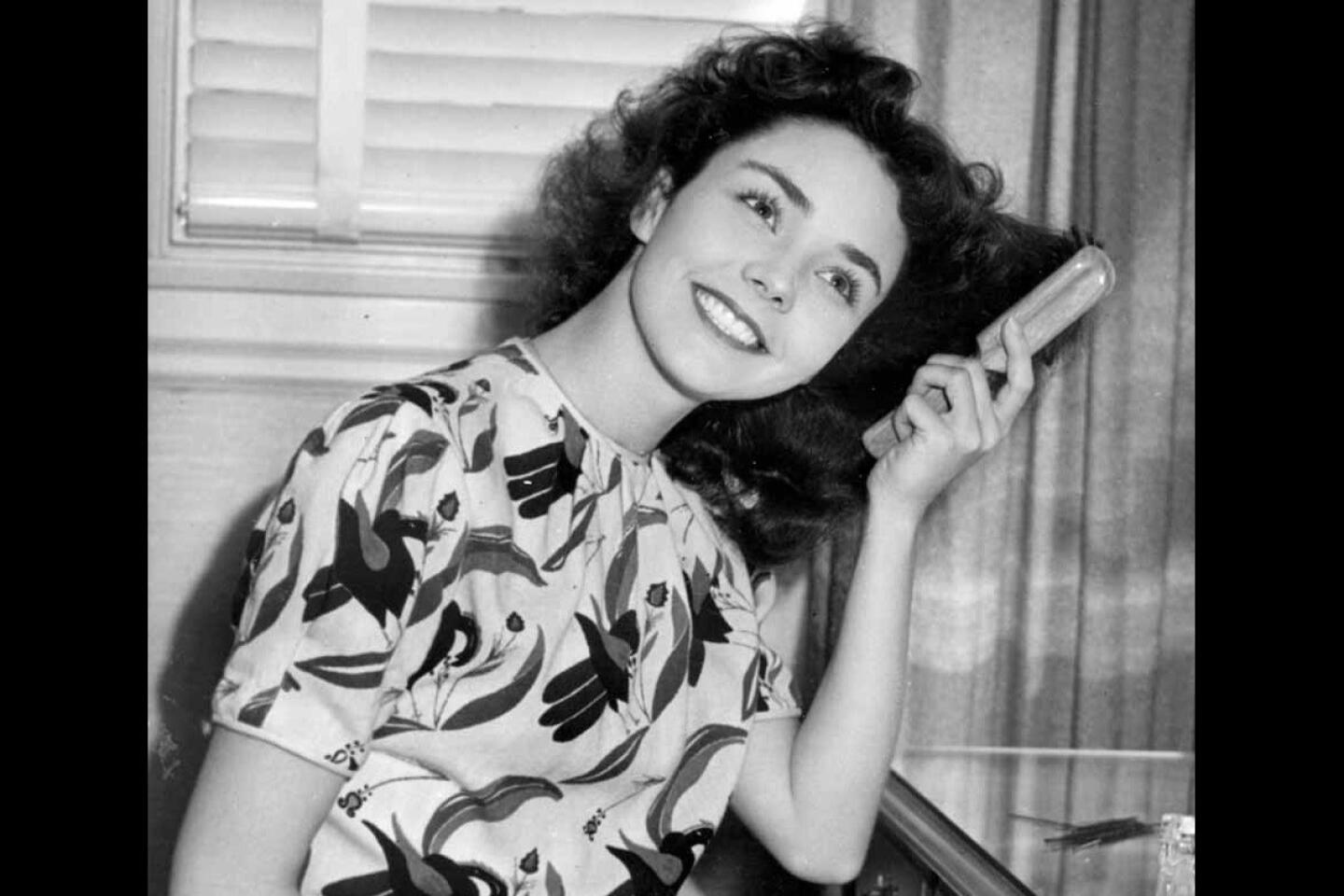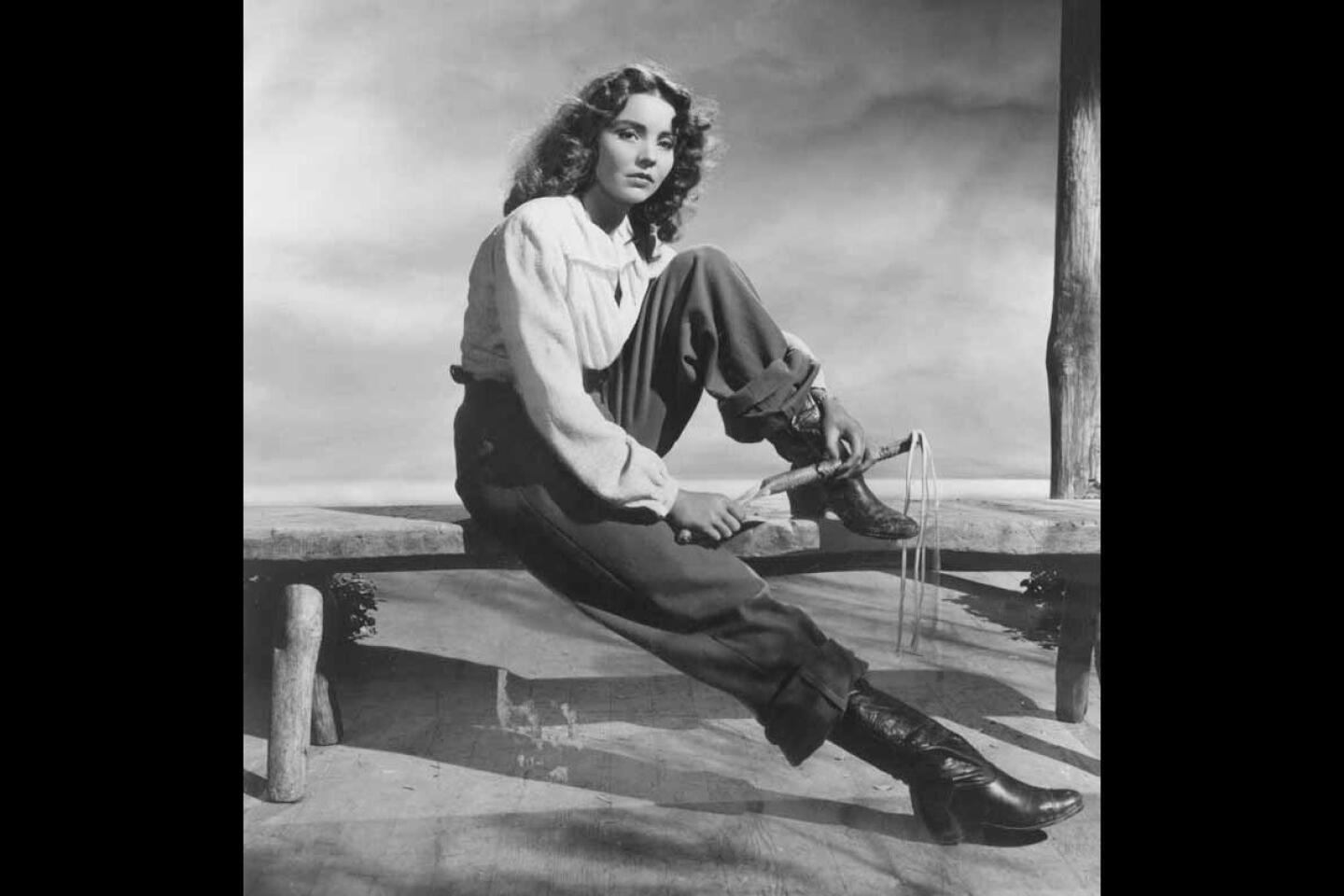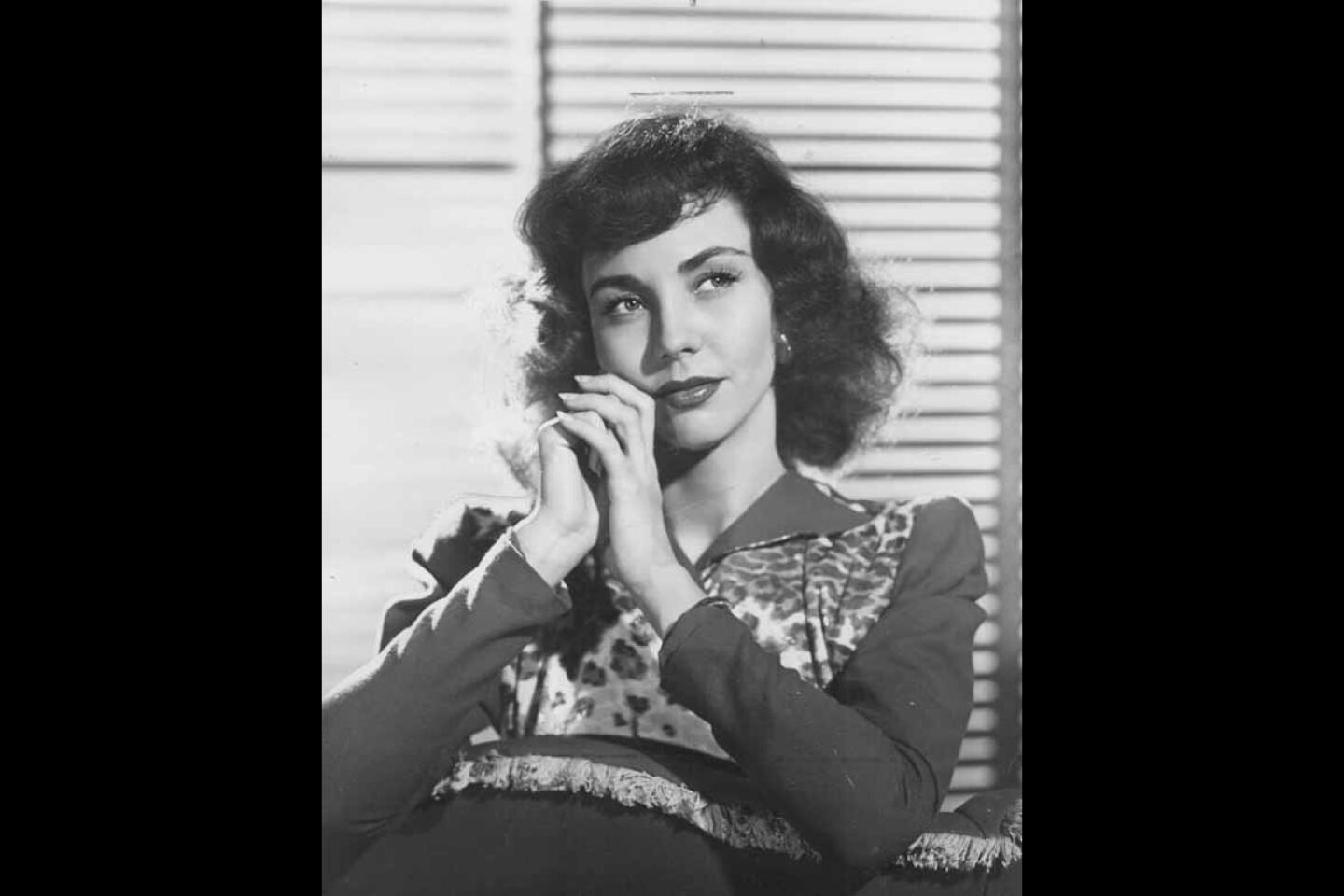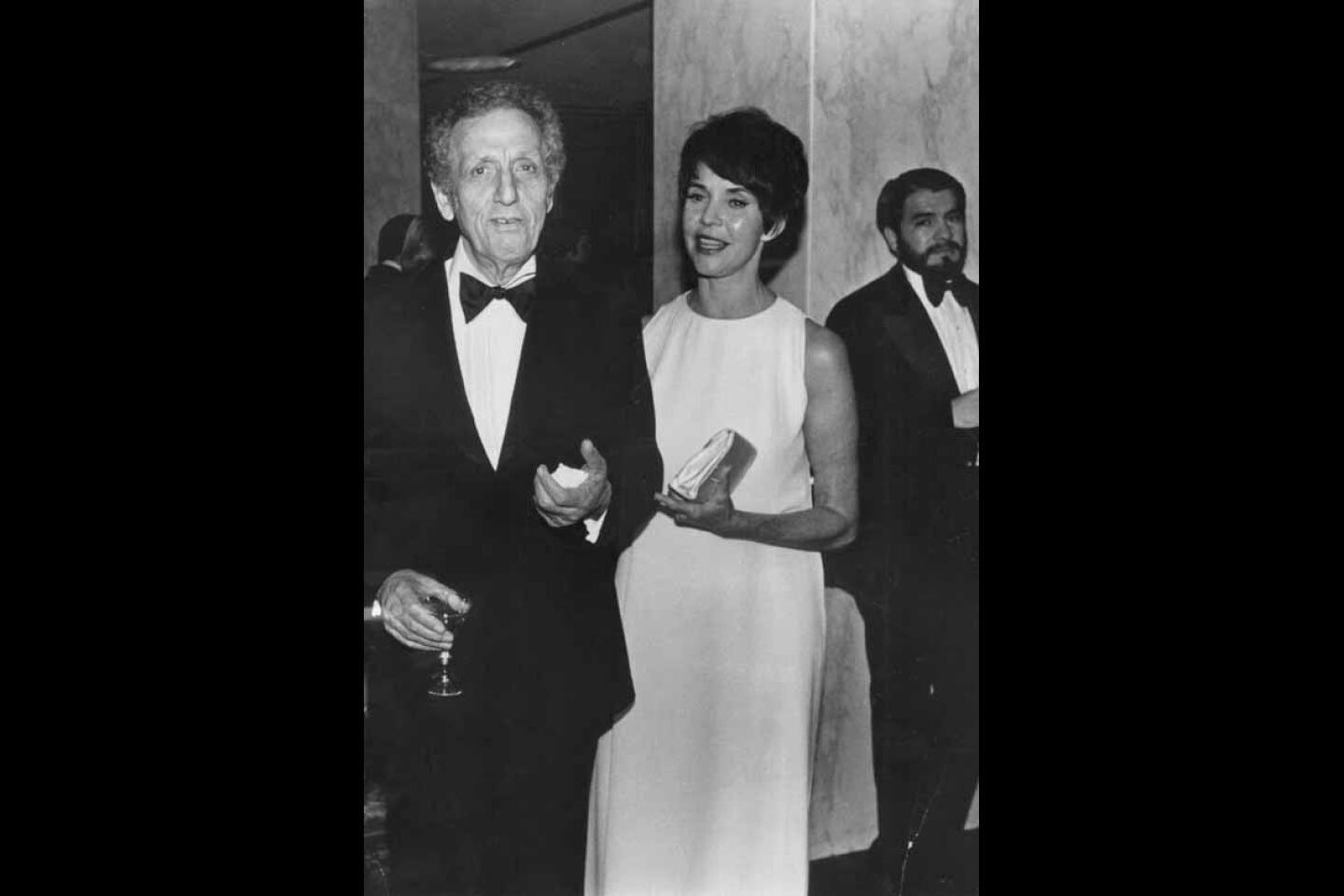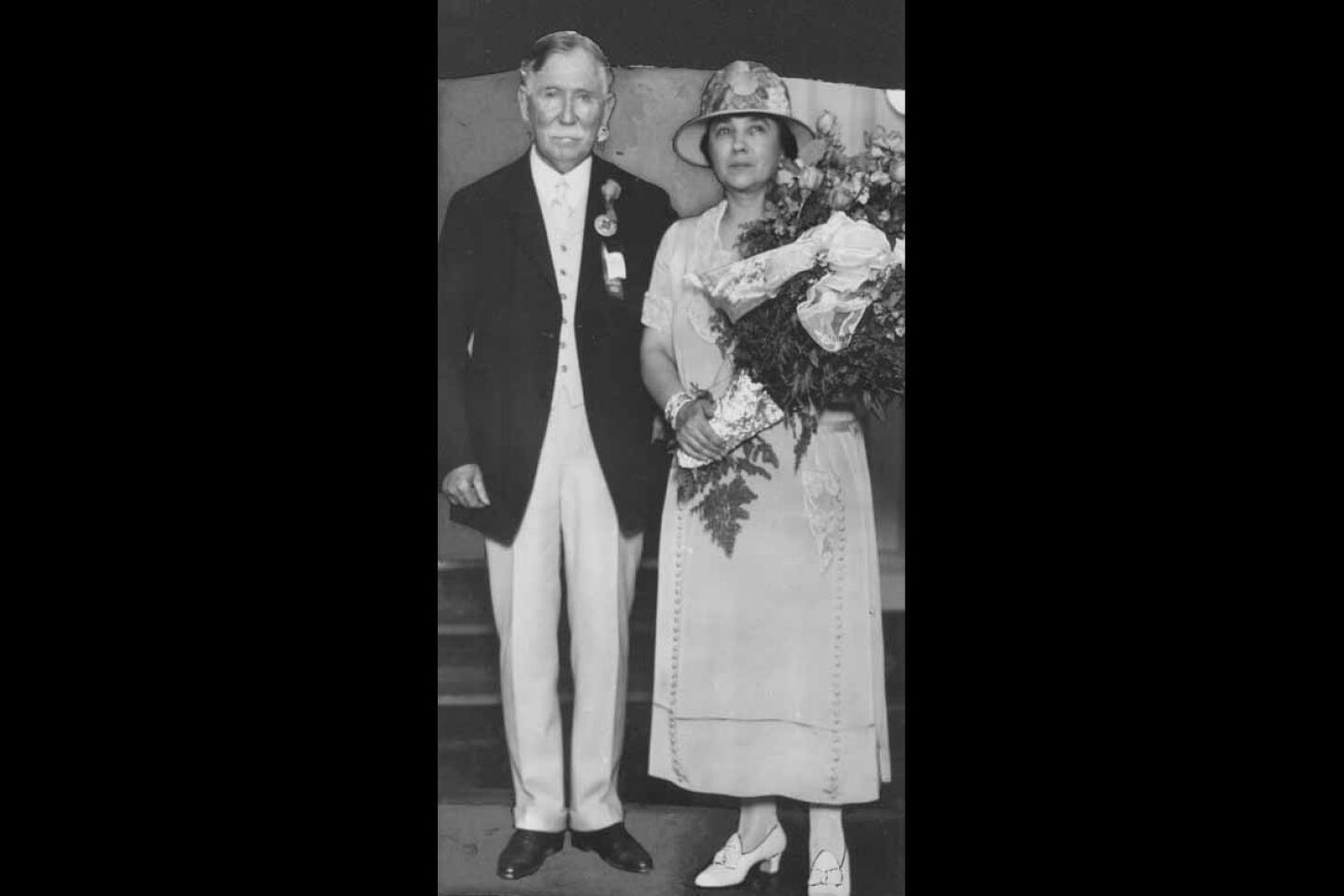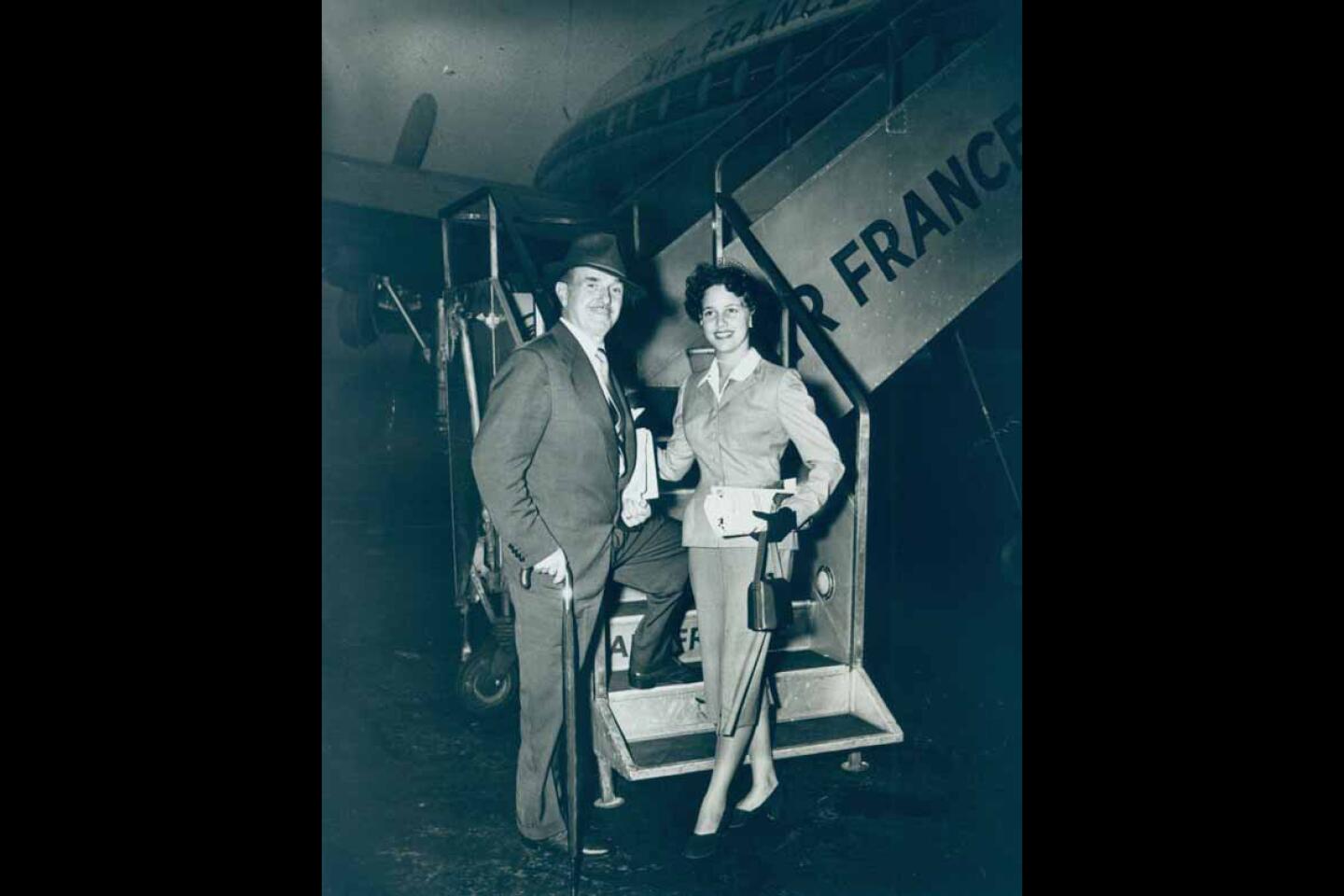Review: How L.A. became itself: Jean Stein’s new oral history ‘West of Eden’
- Share via
When Raymond Chandler left Los Angeles in 1946, decamping with his elderly wife for the calmer environs of La Jolla, he did so because he had become fed up with the city. Once a place that that had captivated his imagination and made him the writer that he was, he said Los Angeles had finally become nothing but “a tired old whore.” He’d always had a love-hate relationship with L.A., but after a few years in the movie business Hollywood did him in, and he fled the city like a cat on fire.
Chandler’s ghost haunts Jean Stein’s “West of Eden: An American Place.” It tells the stories of five families or individuals, all extremely rich and most very famous, who pursued their dreams in Los Angeles: the Dohenys, the Warners, Jane Garland, Jennifer Jones and the Steins (as in Jules Stein, founder of MCA and Jean Stein’s father).
As with her previous book, “Edie,” about Andy Warhol’s muse, Stein’s method is to construct a narrative entirely from oral interviews, an approach that lends the book a kind of Rashomon quality: The subjects are viewed from various angles by those who either knew them intimately or are well equipped to comment on their lives. We feel, as readers, that we are listening to voices more than reading a text. It’s like being at an insider’s cocktail party where the most delicious gossip about the rich and powerful is being dished by smart people, such as Gore Vidal, Joan Didion, Arthur Miller and Dennis Hopper. The result is a mesmerizing book.
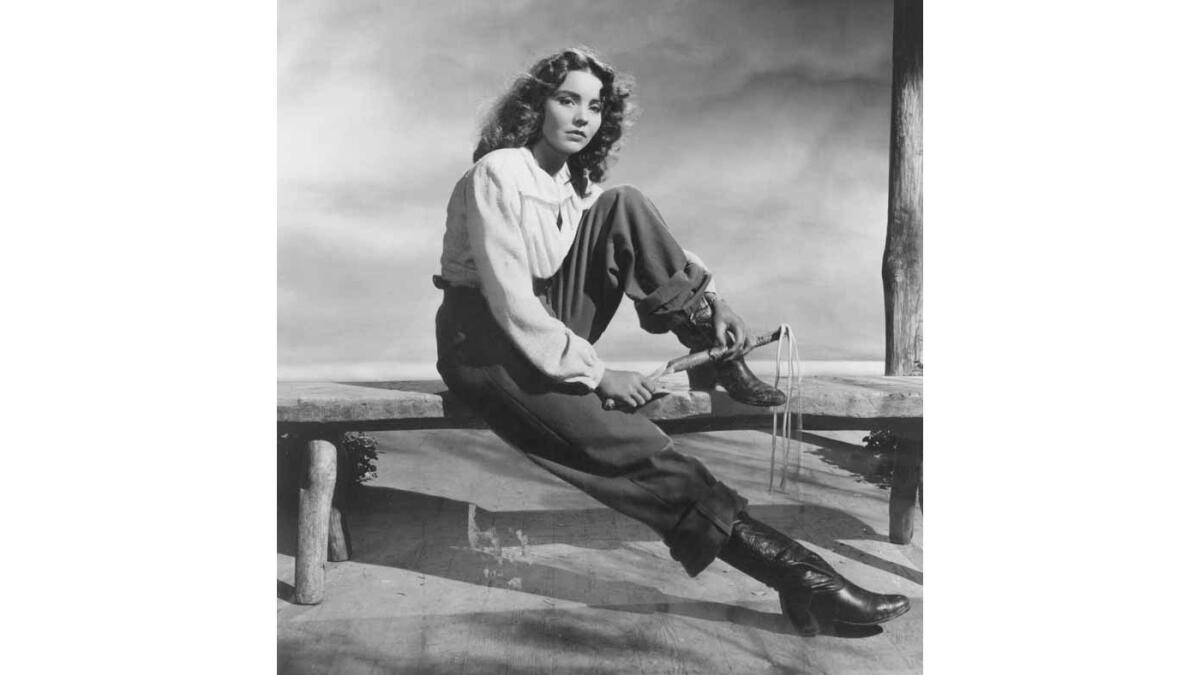
Jennifer Jones in “Duel in the Sun” (1946).
It’s been said that the story of L.A. is really the story of three things: oil, real estate and the movies. Stein covers them all, with the Dohenys representing oil; Jack Warner, Jennifer Jones and Jules Stein the movies; and Jane Garland real estate (where her father, William Garland, made much of his fortune).
But there’s a fourth story to be told about L.A., and that’s the story of the visual artists who put the place on the map in the 1960s, and that story gets its moment in “West of Eden” as well — and in a completely fresh way — in the section dealing with Jane Garland.
Garland was a young, wealthy schizophrenic woman confined to a mental facility whose psychiatrist came up with the idea of hiring young men to squire her about so she might experience what life would be like for someone her age and means if she were not so seriously sick.
The guy hired for the job was aspiring young artist Ed Moses, along with his friends Walter Hopps, John Altoon and Craig Kauffman. This in itself is wildly funny and strange. But it’s easy money for the artists, and they rather like Jane, whose mother, a former Miss Cincinnati who once had aspirations to act but instead married money, can’t deal with her troubled daughter. Jane is strange for sure but intriguingly so, and her artist-tenders lark about happily with her, taking turns spending nights at the Garland’s posh Malibu beach house, getting loaded and taking her to Disneyland and trying not to act too alarmed when she dumps her food on the floor in restaurants and does handstands wearing a dress and no underwear.
One of Chandler’s recurring themes was that of the rich family who ends up with the damaged or spoiled child. That story is a constant thread in Stein’s book, whether it’s the unresolved Ned Doheny-Hugh Plunkett murder-suicide tale or the story of Bob Simon, Norton Simon’s son (and Jennifer Jones’ stepson), who killed himself in a closet above where his pregnant wife was sleeping. And then there’s Jones’ daughter, Mary Jennifer, who one day simply walked off the roof of a 22-story building.
These are the offspring who can’t “gut it out,” as one person says, in the face of powerful fathers and indifferent mothers. The exception is Stein herself, who not only seems to have led a rich life but produced two accomplished daughters, Wendy and Katrina vanden Heuvel, the former an actress and producer, the latter the editor and publisher of the Nation.
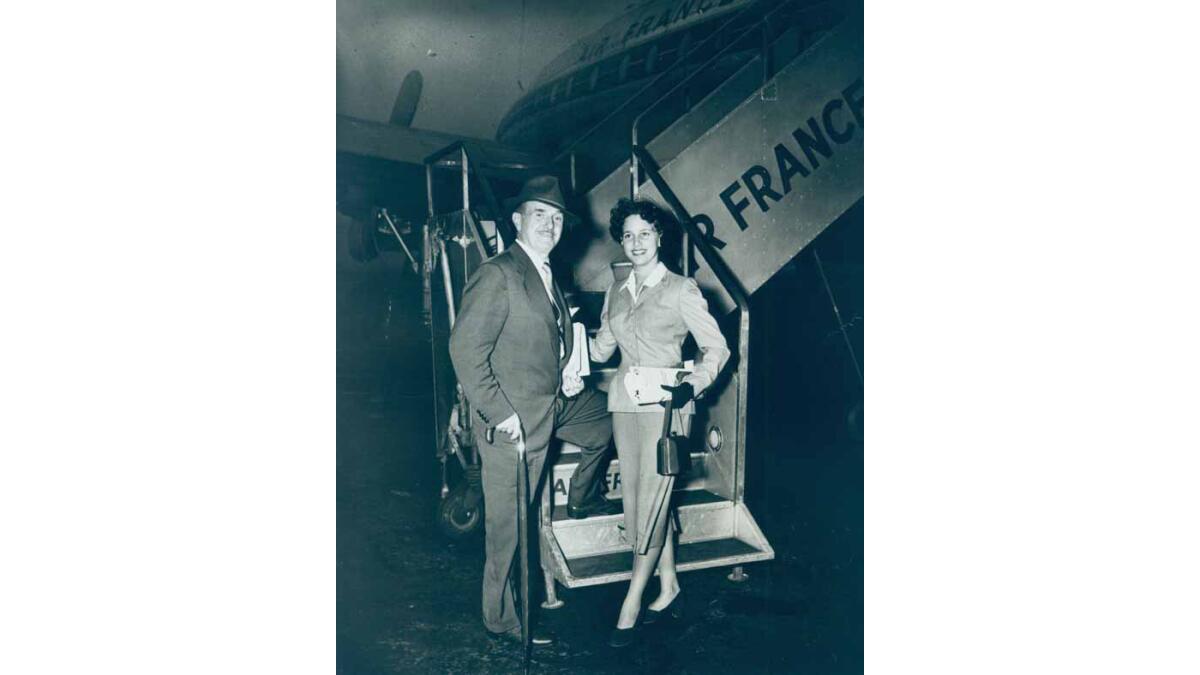
The wives of the rich in these tales often don’t fare much better than their troubled children. Some end up living in lavish bedroom suites as recluses, like Mrs. Jack Warner. Others form obsessive attachments to their therapists (one of whom, Milton Wexler, figures large in these tales) or take up an interest in the occult. Some simply eat themselves into muumuu-land.
Each of the five sections in “West of Eden” begins with not just a name — Doheny, Stein, et al — but also the addresses where these families lived, as if to signal that in Los Angeles, for the wealthy a house isn’t just a house, it’s more like a family member. Chandler understood this well, how the Beverly Hills mansions and Malibu beach houses are the intimate signifiers that later turn into the sepulchers, often with lingering power. David Geffen bought Jack Warner’s house for $47 million, Rupert Murdoch reputedly snagged the Stein’s for a mere $7 million, both men hoping perhaps to acquire not just some nice real estate but a part of the mojo of the former owners. As Geffen tells Stein, buying Warner’s house and all its contents felt like “an homage to an idea about the way people lived in Hollywood. I got caught up in the whole gestalt,” he says ruefully — perhaps the same gestalt that sent Chandler fleeing.
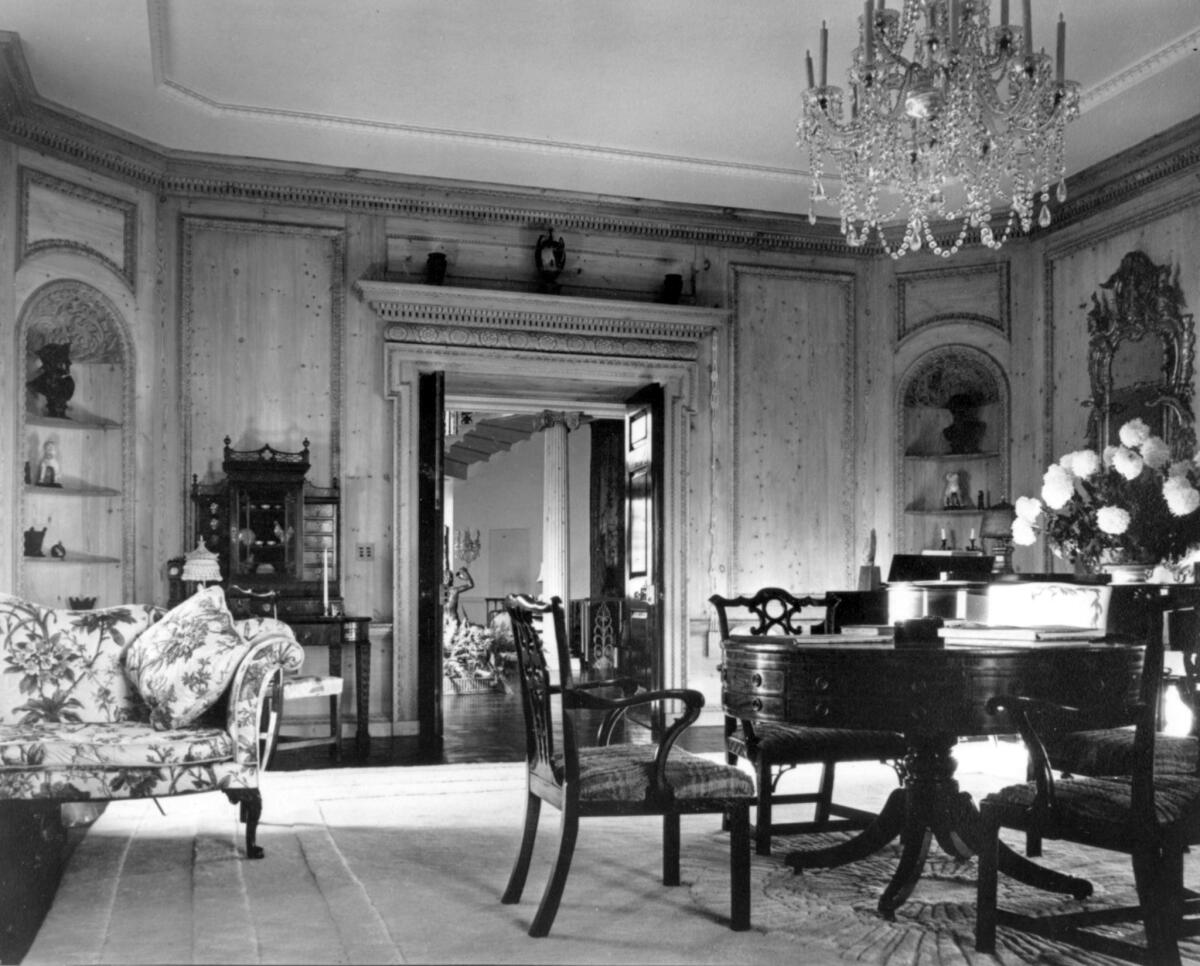
Jack Warner’s house in Los Angeles.
As Stein’s acknowledgments suggest, she seems to have known everyone worth knowing, and she collected the interviews in this book over many decades. As an editor at the Paris Review and Grand Street, she’s lived a literary life, which she was first introduced to by Gore Vidal at age 19 (their mothers were close friends, both spectacular lushes).
Stein’s own voice is hardly heard in “West of Eden,” even though she’s intimately connected to many of her subjects (she does offer sharp little observations here and there — like the one about attending the lavish birthday parties of her friend Barbara Warner, or the subtle recollections of her own family life). What she’s clearly good at is drawing out stories from others and then assembling them into a powerful collage.
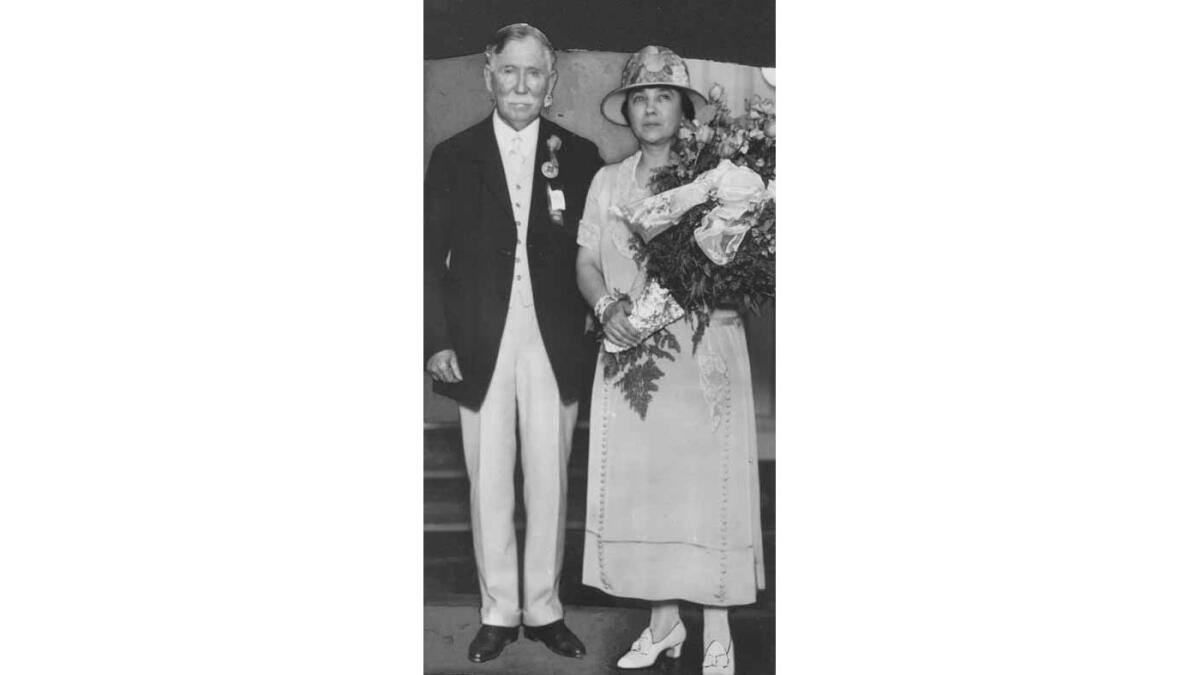
Some sections of the book are more compelling than others. The Doheny murder-suicide tale feels a bit old despite Richard Rayner’s illuminating comments, whereas the lesser-known story of Jennifer Garland is particularly moving for the way it depicts the schizophrenic and her kind young artist-tenders. The Warners make fascinating reading: Jack comes off as the venal man he was said to be (not even his descendants can find many kind words for him). The section devoted to Jennifer Jones is especially strong for its depiction of her marriages to David O. Selznick and later Norton Simon, thus connecting the realms of movies and art in Los Angeles via the life of one rather eccentric actress.
“West of Eden” is compulsively readable, capturing not just a vibrant part of the history of Los Angeles — that uniquely “American Place” Stein refers to in her subtitle — but also the real drama of this town, as reflected in the lives of some of its most powerful players.
::
West of Eden: An American Place
Jean Stein
Random House: 350 pp., $30
Freeman is the author of several novels and “The Long Embrace: Raymond Chandler and the Woman He Loved.” Her memoir, “The Latter Days,” will be published by Pantheon in June.
More to Read
Sign up for our Book Club newsletter
Get the latest news, events and more from the Los Angeles Times Book Club, and help us get L.A. reading and talking.
You may occasionally receive promotional content from the Los Angeles Times.
